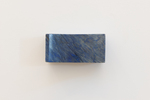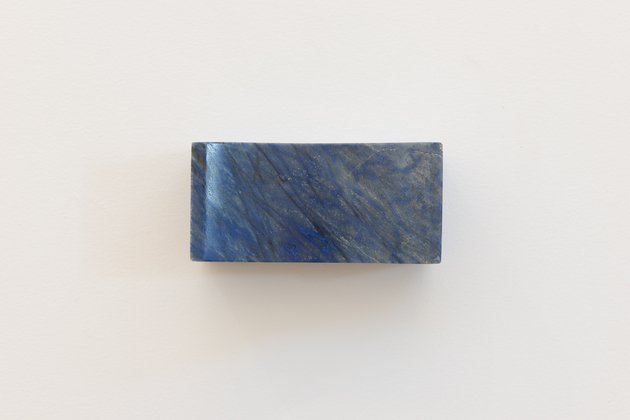Dividing Line
online opening: 21/08/2020
Luciana Brito Galeria is pleased to announce a group show online Dividing Line. Inspired by Regina Silveira’s artwork of the same name, the show presents a set of works that urge the viewer to critically reflect on our current reality, at a time when social conceptions are being necessarily reconfigured to give rise to new political-social parameters. As a result, the visitor is also made aware of how critical moments establish a dividing line with the reality of the past. The curatorial proposal moreover aims to create a novel visual experience through the use of the virtual exhibition format. Altogether, there are more than 20 artworks by the artists represented: Regina Silveira (1939, Porto Alegre), Marina Abramovic (1946, Yugoslavia), Fernando Zarif (1960–2010, Brazil), Bosco Sodi (1970, Mexico), Caio Reisewitz (1967, Brazil), Rochelle Costi (1961, Brazil), Liliana Porter (1941, Buenos Aires), Hector Zamora (1974, Mexico), Tiago Tebet (1986, São Paulo), Rafael Carneiro (1985, Brazil) and Iván Navarro (1972, Chile).
The works by Regina Silveira are a group of prints on aluminum that use the figure of the hand as an element that generates action. In Dividing Line (2020), the works whose title lends its name to the exhibition, the artist registers the action of a long tear in a thick sheet of paper, dividing into two halves, two realities, irreparably. For its part, Verso e reverso (2020) records the moment at which the artist pierces the sides of a surface with her hand, impacting it with an act of crossing through, of penetration. The appropriation of elements from daily life – in this case the figure of the hand – is part of the artist’s research. Here, the artist uses her own hand to leave the mark of aggressive and provocative personal gestures. This series is especially relevant in the current context, constituting a metaphor for this time of historical worldwide rupture that is ushering in a new era.
Hector Zamora’s investigation enters historical tangles to problematize social and political questions. The installation Sem revolução não há independência [Without Revolution There Is No Independence] (2016) consists of 26 ceramic bricks, all from the time of Imperial Brazil, in an allusion to a Brazil historically inert as a nation. This anachronistic and atemporal discourse by Zamora positions this work precisely as an incisive criticism of the current moment of political polarization and division that we are now experiencing. Each of the 25 bricks represents a state in Brazil, all wrapped in a page of the Brazilian Constitution, except one, which remains bare, in an allusion to our capital.
Likewise, the works by Iván Navarro kindle a clashing of the conscience. His series of prints Carta visual [Visual Letter] (2019) features messages from protests through a practice often used by the artist: the deconstruction of symbols of ideologies and common elements for the transmission of political and social messages. Having grown up under the Pinochet dictatorship in Chile, the artist
understands how the use of codes and subliminal messages can combat institutionalized power, laying claim to human rights.
Marina Abramovic has traveled throughout Brazil on various occasions, always searching for experiences and raw materials for her work. She recognized in this country the power of spirituality, of religious syncretism and its curative potential. These experiences gave rise to the series of works Places of Power, with photographs, videos and objects made based on her interaction with the natural places and elements of Amazonia. The effects of these elements enrich the body, mind and spirit – as in the case of blue quartz, the mineral used in the work Black Dragon (Blue Quartz) (1994), which bears medicinal properties. According to the artist, this artwork plays the fundamental role of balancing the energies, boosting the quality of life, and curing those who believe in its power.
Bosco Sodi also uses elements from nature in the production of his artworks. These small paintings/objects combine clay with natural fibers and pigments to create effects of colors and textures, which simulate natural geologic and chemical phenomena. Although in different ways, the works by both Sodi and Abramovic investigate the knowledge of ancestral and native peoples, raising awareness for the preservation nature, as well as for the sacredness it contains.
In his most recent series, Cassino (2019), Caio Reisewitz presents large-format photographs also imbued by the power of nature, and which stand as a warning. The images were captured some years ago, but were shown for the first time more recently in a solo show of the same name in 2019, at Luciana Brito Galeria, precisely during the critical moment of forest fires in the Amazon region. Here, Cassino refers to the coastline along Brazil’s border with Uruguay and features images that seem to position the observer precisely within the tranquility of the deserted coastline portrayed. If considered in light of the current situation, the series alludes to the involuntary moment of man’s making peace with nature through the withdrawal of the human presence during the pandemic. Reisewitz combines impeccable photographic technique with the exuberance of nature and its power that is utterly necessary for the preservation of life.
Also in the medium of photography, Casa da ilha [Island House] (2018), by Rochelle Costi, opens a window to escapism and to the sublimation of reality. In order to understand the dimensional aspects of the image, the observers are led to greater self-awareness as they themselves becomes a reference for comparing extremely divergent, surprising scales. The work involves a tiny scale model of a real house from 1951, located on an island of the Rio São Francisco. The scale model contains a fragment of a cement floor tile and a stack of chunks of anil, both from the artist’s affective memories. This process of self-perception, associated with Costi’s personal history, resorts to devices recurrent in her investigation, such as the manipulation of scale, illusions of perception,
and visual metaphors, to deal with the human experience and to recover this enchantment that can only arise from private worlds.
Existential questions and the scale of values are part of Liliana Porter’s research. Her series of drawings featured in this show piques the collective mindset with a thin line that traces the paradox between reality and fiction. The small objects are part of the artist’s personal collection, discovered in antique fairs, and whose primary meanings are modified through Porter’s artistic composition. Besides arousing collective memories, they function as triggers for experiences stored in the unconscious. They are unique combinations that tell a story common to all of us, but also unique to each person.
The curatorship also includes works by two artists whose researches prioritize the medium of painting. Since a very young age, Tiago Tebet has been exploring the processes and forms of resignification, mainly in the representation of the counterculture of marginalized popular practices. His research into the possibilities and specificities of representation in painting has developed into a work concerned with construction and materiality, as is strongly perceived in this group of more recent works by the artist. The variables of representativity in painting are also intensely questioned by Rafael Carneiro. To this end, the artist makes use of his private collection of digitized images in the construction of “virtual collages,” where the notion of depth is lost. When they are used in painting, these images recover their formal essence, as is the case of the work Esteira [Conveyor] (2020), an enigmatic montage of disparate images with surreal and phantasmagoric tones. For their part, the paintings by Fernando Zarif portray facial expressions more than mere faces. They are like fractions of seconds of reports of individual experiences, moments of introspection and existential crises. Zarif’s artworks are striking for both their multiplicity of references and their technical and aesthetic refinement. Although made with colorful and irreverent lines, these faces are actually in keeping with the seriousness of the moment we are going through.



















































